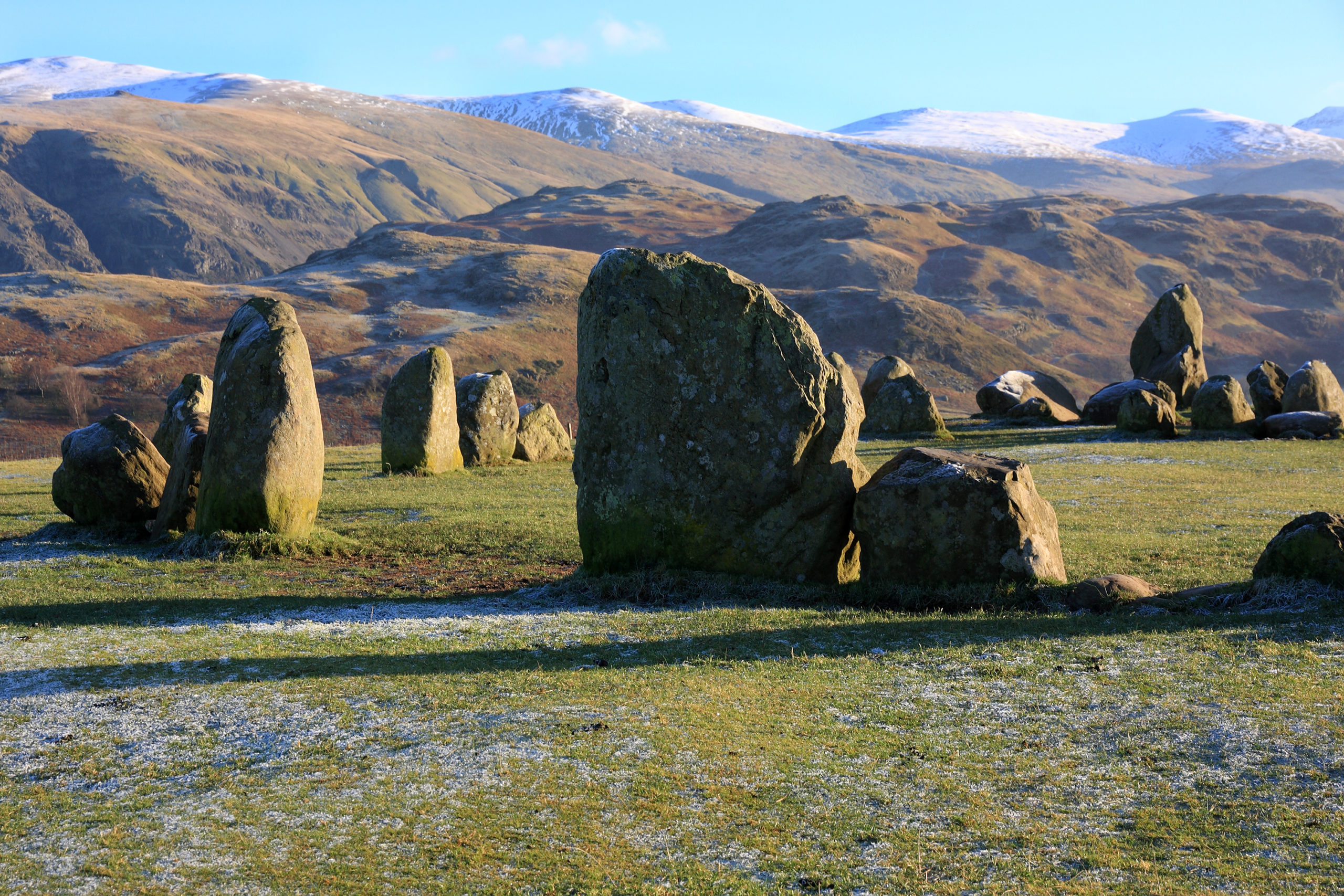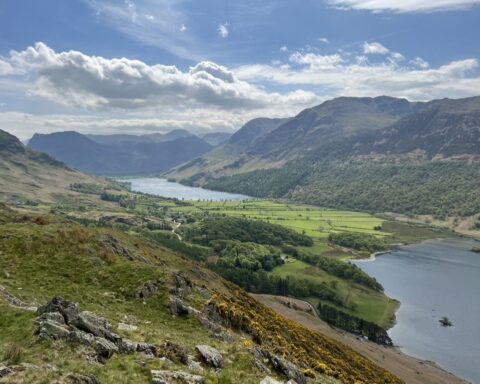A Neolithic Wonder Amidst Majestic Mountains
The construction of the circle dates back 5000 years, to around 3000 BC. This was the late Neolithic period and early Bronze Age. Castlerigg is amongst the oldest in Europe. It’s partly this antiquity and somewhat the fantastic location that makes it a big draw for tourists. The stones sit on a small and grassy plateau. Mighty Skiddaw, Blencathra, and the northernmost summits of the Helvellyn range watch over them. At dawn and dusk, it becomes a truly breathtaking sight. This is particularly the case in winter when the sun is low in the sky. The stones can cast long, sinister shadows.
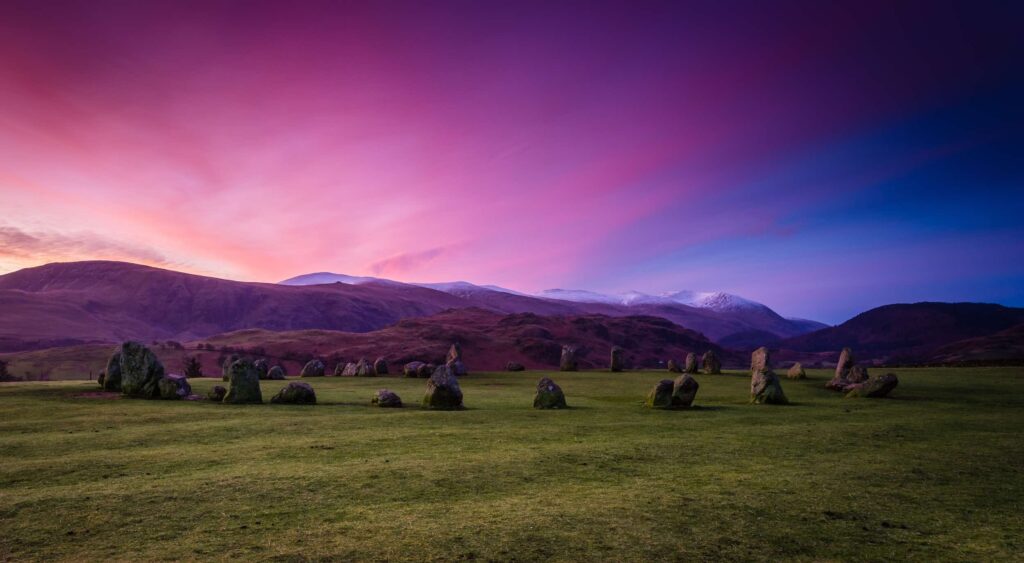
The first written record of Castlerigg Stone Circle was that of the antiquarian and Anglican clergyman William Stukeley. When he visited in 1725, he counted 50 stones. He also claimed there was a second, even larger circle in a neighbouring field. However, researchers have never found evidence to back this up.
The Mystery of Stone Circles
Nobody’s sure what the people of the New Stone Age would have used the circle for. There are many theories. It may have had astronomical or religious significance. Or maybe both? Archaeologists have conducted limited excavations at the site. However, the discovery of a Neolithic stone axe from Great Langdale, in the nineteenth century suggests a trading centre. The two massive uprights guarding the northern entrance to the circle seem to confirm that it was a meeting place. It continues to be a place of gathering. To this day, people meet here for the summer and winter solstices.
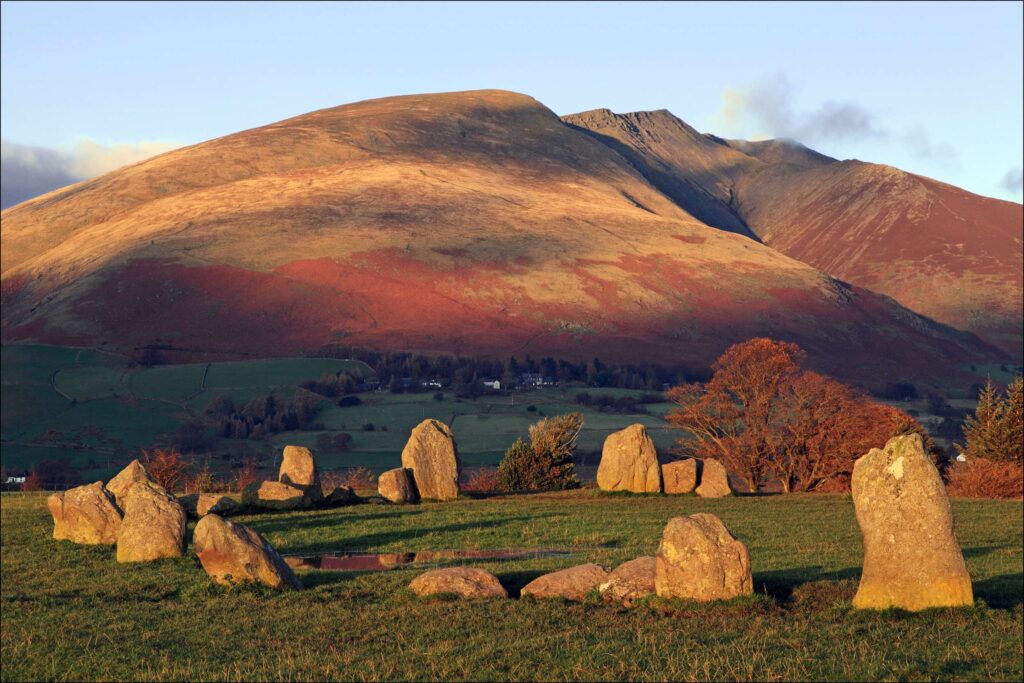
Circle Size
Castlerigg Stone Circle is 100ft in diameter and consists of 38 stones. They vary in height from about three feet tall to almost eight feet. Just inside the eastern end of the circle is a group of 10 stones forming a rectangular enclosure known as ‘The Sanctuary’. This mysterious feature only appears in one other stone circle in Britain Also in Cumbria, the Cockpit near Pooley Bridge in the eastern Lake District.
Castlerigg Stone Circle Walk
Castlerigg Stone Circle is located in a field less than two miles East of Keswick. Keswick to Castrigg Stone Circle is a 45-minute walk. There are, however, some roadside parking next to the stones. The walk will take you through woods, over fields, and along quiet lanes. Featuring views of some of England’s highest and most impressive mountains. In this respect, the scenery has remained largely unchanged since the construction of the circle in. When returning to Keswick, with its 21st-century walker-friendly offerings like cappuccino and real ale, take quiet lanes and a disused railway. Don’t forget to visit Keswick Museum on your way back to see the Neolithic axe-head discovered at Castlerigg in 1875.
There are no admission charges and no restrictions on visiting times. You can simply wander as and when you. If you have a dog, keep it on a lead, as sheep often graze at the site. An interpretation panel near one of the gates into the site explains the circle’s history and shows a model of the stones as they are today.
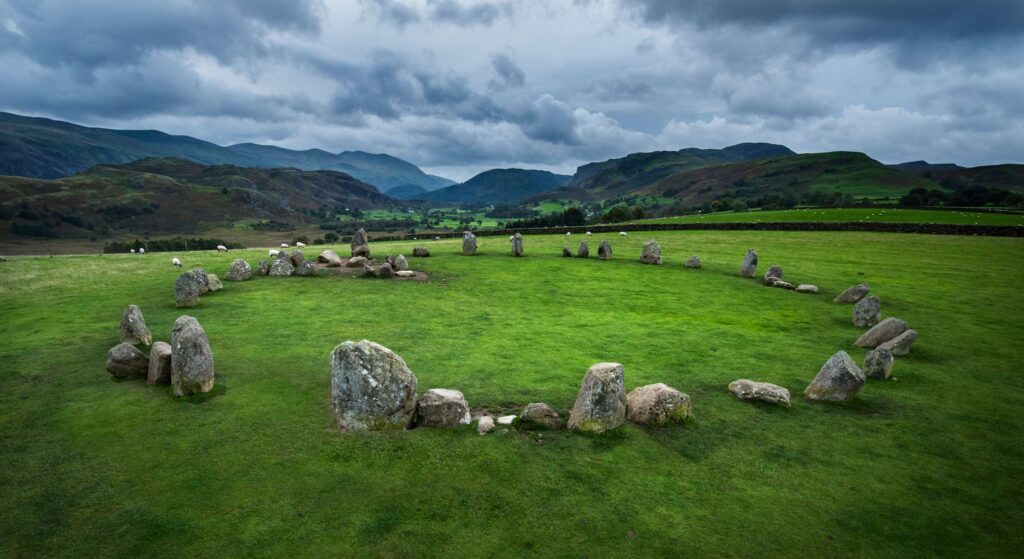
Castlerigg Stone Circle Walk onto High Rigg
You can combine a trip to the stone circle with a walk onto High Rigg. Passing Tewet Tarn and crossing the atmospheric moorland of Low Rigg along the way. It’s little more than two miles from Castlerigg to the top of this little fell. Often described as the Lake District in miniature, the ridge leading south from the summit is home to hidden tarns, dark crags, various other knobbly tops and a short, heather-covered spur. This walk offers breathtaking views of Thirlmere and the Helvellyn range.
If you are into impressive prehistoric monuments, why not explore, Long Meg and Her Daughters or Cockpitt Stone Circle.

